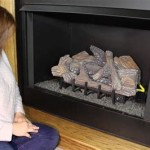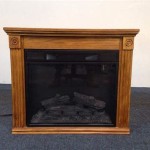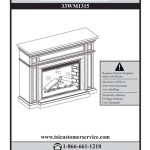How to Decorate Your Fireplace Mantel for Fall
The fireplace mantel serves as a focal point in many homes, particularly during the autumn season. Decorating it appropriately can create a warm, inviting atmosphere that complements the changing colors and ambiance of fall. This article provides comprehensive guidance on how to effectively style a fireplace mantel for fall, emphasizing balance, color palettes, and thematic elements.
Choosing a Fall Color Palette
Selecting a cohesive color palette is fundamental to achieving a visually appealing mantel display. The chosen colors should harmonize with the existing décor of the room while reflecting the essence of autumn. Common fall color palettes include warm tones such as oranges, reds, and yellows, often complemented by neutral shades like browns, creams, and grays. Deeper, more sophisticated palettes incorporate burgundies, deep greens, and muted golds. When selecting a color palette, one should consider the existing wall color, furniture upholstery, and flooring to ensure a cohesive design.
One approach involves selecting a dominant color, a secondary color, and an accent color. For instance, a dominant color of burnt orange can be paired with a secondary color of cream and accented with touches of深褐色. Another option is to utilize a monochromatic palette, varying the shades and textures of a single color, such as different hues of brown, to create visual interest. Consider the impact of each color on the overall mood. Warm colors tend to evoke feelings of comfort and energy, while cooler colors create a sense of calm and tranquility. The goal is to select a palette that reflects the desired mood and complements the existing design aesthetics.
The utilization of natural elements can also influence the color palette. Items such as dried leaves, gourds, and branches introduce organic colors and textures that serve as a natural starting point for the design. These elements often incorporate a range of earth tones, providing a foundation upon which to build the color scheme. It is important to assess the undertones of these natural elements to ensure compatibility with the chosen paint colors and fabrics in the space.
Ultimately, the choice of a fall color palette is a personal decision. However, by considering the existing décor, the desired mood, and the incorporation of natural elements, one can create a visually harmonious and seasonally appropriate fireplace mantel display. Avoid using too many colors, as this can create a cluttered and visually distracting effect. Simplicity and cohesion are key to achieving a balanced and appealing aesthetic.
Arranging Elements for Visual Balance
Achieving visual balance is crucial for a well-designed mantel. Balance refers to the equal distribution of visual weight. This can be achieved through symmetrical or asymmetrical arrangements. Symmetrical balance involves mirroring elements on either side of a central focal point, while asymmetrical balance utilizes differing elements to create equilibrium.
A symmetrical arrangement is typically more formal and traditional. Start by establishing a central focal point, such as a large mirror, artwork, or a substantial decorative object. Then, place identical or nearly identical items on either side of the focal point. This could involve matching candlesticks, vases, or small pumpkins. The key is to create a mirror image that provides a sense of order and predictability. Ensure that the items are positioned at equal distances from the center and that their heights and sizes are comparable. Symmetrical arrangements are particularly effective in rooms with a classic or formal design aesthetic.
Asymmetrical balance is more dynamic and contemporary. It involves arranging items of different sizes and shapes to create a sense of equilibrium. To achieve this, place a larger, heavier item on one side of the mantel and balance it with a collection of smaller, lighter items on the other side. For example, a tall vase filled with fall foliage could be balanced by a grouping of smaller gourds and candles. The goal is to create a visually interesting arrangement that feels balanced without being perfectly symmetrical. Asymmetrical arrangements are suitable for a wide range of interior styles, from modern to bohemian.
Consider the principle of layering when arranging elements. Layering involves placing items in front of and behind each other to create depth and visual interest. Start by positioning the tallest items at the back of the mantel and gradually decrease the height as you move forward. This allows each item to be visible and contributes to a sense of dimension. Overlapping items can also create a more cohesive and visually appealing arrangement. Pay attention to the negative space around the items. Negative space is the empty area that surrounds the objects and helps to define their shapes. Too much clutter can make the mantel feel overwhelming, while too little can make it feel sparse and unfinished. Strive for a balance between objects and negative space to create a visually pleasing composition.
Experiment and adjust the arrangement until it feels balanced and visually appealing. Step back and view the mantel from different angles to assess the overall effect. Don't be afraid to move things around and try different combinations until you achieve the desired result. Remember that there are no hard and fast rules when it comes to mantel decorating. The goal is to create a display that reflects your personal style and complements the aesthetic of your home.
Incorporating Thematic Elements of Fall
Integrating thematic elements evokes the essence of the season and elevates the fireplace mantel display. These elements can range from natural materials to decorative objects that represent the characteristic features of autumn. Pumpkins, gourds, leaves, and branches are commonly used to create a seasonal atmosphere.
Pumpkins and gourds are quintessential fall decorations. They come in a variety of shapes, sizes, and colors, making them versatile additions to any mantel display. Real pumpkins and gourds can be used, or artificial versions can be chosen for their longevity. Choose pumpkins and gourds that complement the chosen color palette and arrange them in groupings of varying sizes. Consider using different textures, such as smooth pumpkins paired with bumpy gourds, to add visual interest. Pumpkins can be painted or decorated to further customize them to the design.
Fall foliage, such as dried leaves and branches, brings natural beauty and texture to the mantel. Gather fallen leaves in a variety of colors and arrange them in vases or scatter them along the mantel. Branches can be added to create height and structure. Consider using branches with berries or colorful leaves to add a pop of color. Preserving leaves can extend their lifespan and prevent them from crumbling. Pressing leaves between sheets of paper or coating them with a sealant can help to maintain their shape and color.
Candles and lighting add a warm and inviting glow to the mantel. Candles can be incorporated in a variety of sizes and shapes, from tall candlesticks to small votives. Choose candles that complement the color palette and fragrance of the season. Scented candles with fall scents, such as pumpkin spice or apple cinnamon, can further enhance the ambiance. String lights can also be used to add a touch of sparkle and warmth. Drape string lights along the mantel or weave them through the foliage to create a festive atmosphere.
Additional thematic elements can include corn stalks, hay bales, and other agricultural items. These elements add a rustic touch and evoke the feeling of a harvest season. Small hay bales can be used as pedestals for displaying pumpkins or other decorative objects. Corn stalks can be placed on either side of the fireplace to frame the mantel. Incorporating these elements requires careful consideration of the scale and proportion of the mantel to avoid overcrowding. Maintain a balance between the thematic elements and the overall design to avoid creating a display that feels cluttered or overwhelming.
Ultimately, the selection and integration of thematic elements should reflect personal preference and complement the overall aesthetic of the home. By carefully selecting and arranging these elements, one can create a fireplace mantel display that captures the essence of fall and creates a warm and inviting atmosphere.
The successful decoration of a fireplace mantel for fall relies on a combination of color palette selection, balanced arrangement, and the strategic inclusion of thematic elements. Through careful planning and execution, a homeowner can transform this focal point into a visually appealing and seasonally relevant space.
:max_bytes(150000):strip_icc()/cozy-fall-mantel-decorating-5dfcd9f83cbc45c9ab67357fe2b52b40.jpeg?strip=all)
28 Fall Mantel Decorating Ideas To Make Your Hearth More Homey

My Fall Mantel Decor With Joann Bless This Nest

Absolutely Stunning Ways To Decorate Your Mantel For Fall And Fireplace Home Decor Decorations

30 Diy Fall Mantel Décor Ideas Best Decorations

Fall Fireplace Decorating Tips Sanctuary Home Decor

My Simple And Cozy Fall Mantel Fireplace Decor Worthing Court Diy Home Made Easy
:max_bytes(150000):strip_icc()/create-a-cozy-fall-fireplace-6a890e0a75a94779be2e6d4ef4784f93.jpg?strip=all)
43 Cozy Ideas For Fireplace Mantels

Fall Mantel Decor Ideas That Impress And Inspire

25 Fall Fireplace Mantel Decor Ideas The Turquoise Home

Easy Fall Mantel Decor With A Farmhouse Touch Best Of 2024
Related Posts








